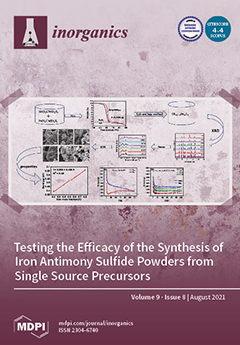Tethering known drugs to a metalorganic moiety is an efficient approach for modulating the anticancer, antibacterial, and antiparasitic activity of organometallic complexes. This study focused on the synthesis and evaluation of new dinuclear ruthenium(II)–arene compounds linked to several antimicrobial compounds such as dapsone,
[...] Read more.
Tethering known drugs to a metalorganic moiety is an efficient approach for modulating the anticancer, antibacterial, and antiparasitic activity of organometallic complexes. This study focused on the synthesis and evaluation of new dinuclear ruthenium(II)–arene compounds linked to several antimicrobial compounds such as dapsone, sulfamethoxazole, sulfadiazine, sulfadoxine, triclosan, metronidazole, ciprofloxacin, as well as menadione (a 1,4-naphtoquinone derivative). In a primary screen, 30 compounds (17 hybrid molecules, diruthenium intermediates, and antimicrobials) were assessed for in vitro activity against transgenic
T. gondii tachyzoites constitutively expressing β-galactosidase (
T. gondii β-gal) at 0.1 and 1 µM. In parallel, the cytotoxicity in noninfected host cells (human foreskin fibroblasts, HFF) was determined by an alamarBlue assay. When assessed at 1 µM, five compounds strongly impaired parasite proliferation by >90%, and HFF viability was retained at 50% or more, and they were further subjected to
T. gondii β-gal dose-response studies. Two compounds, notably
11 and
13, amide and ester conjugates with sulfadoxine and metronidazole, exhibited low IC
50 (half-maximal inhibitory concentration) values 0.063 and 0.152 µM, and low or intermediate impairment of HFF viability at 2.5 µM (83 and 64%). The nature of the anchored drug as well as that of the linking unit impacted the biological activity.
Full article





